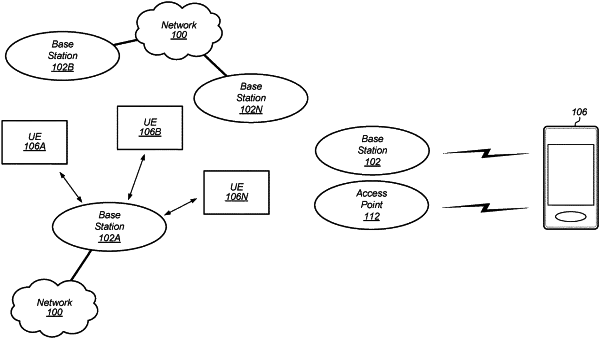| CPC H04W 76/16 (2018.02) [H04W 8/183 (2013.01); H04W 8/24 (2013.01); H04W 76/27 (2018.02)] | 20 Claims |

|
1. A user equipment device (UE), comprising:
one or more antennas;
one or more radios, wherein each of the one or more radios is configured to perform cellular communication using at least one radio access technology (RAT);
one or more processors coupled to the one or more radios, wherein the one or more processors and the one or more radios are configured to perform voice and/or data communications;
wherein the one or more processors are configured to cause the UE to:
connect to a first radio access network (RAN) operating according to a first RAT via a first radio of the one or more radios;
connect to a second RAN operating according to a second RAT via a second radio of the one or more radios;
provide, to the first RAN, configuration information during a radio resource control (RRC) connection procedure, wherein the configuration information indicates a dual connectivity status of the UE;
receive, from the first RAN, a dual connectivity configuration, wherein the dual connectivity configuration is based on the dual connectivity status of the UE; and
enable multiple instances of a communication stack associated with the second RAN, wherein a first instance of the communication stack supports a non-stand-alone mode of operation for the first and second RANs and a second instance of the stack supports a stand-alone mode of operation for the second RAN, wherein a higher layer service level of the UE and lower level radio frequency arbitration of the UE determine which instance of the communication stack has access for transmission and/or reception at any particular time based, at least in part, on one or more of service requirements of each instance of the communication stack or priority of a service being supported by an instance of the communication stack.
|